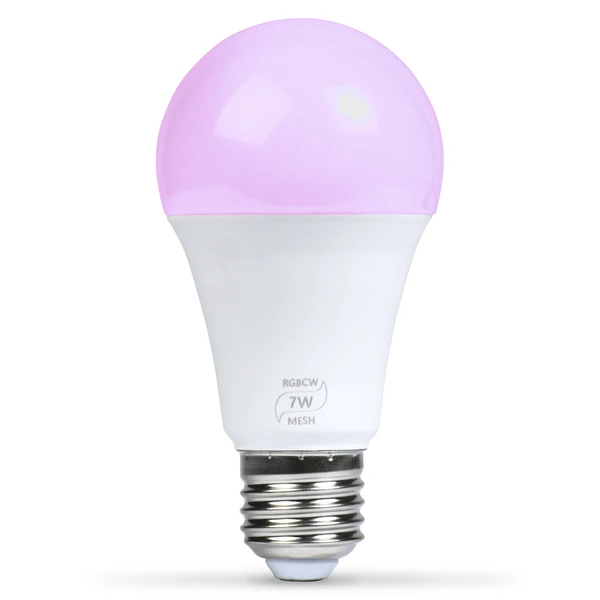Light bulbs are getting smarter with time and you may want to get one if you don’t have any. You may be asking yourself, is it necessary to get a smart light bulb?
Smart light bulbs have several benefits and a worthy investment. It gives you the convenience of switching your lights on and off, dimming and brightening them without physically doing so. It can be controlled via a smartphone app or even better, using voice commands over Alexa without a hub! You can even go further and schedule or create scenes to control your smart light bulbs whether you’re home or away. You also get to save on energy costs.
You may already use and prefer Alexa but don’t want to be tied to a specific smart home hub for your smart devices. You can use Alexa to control some of these smart bulbs without installing a hub, thanks to the inbuilt Wi-Fi protocol that allows you to establish a connection without a hub.
Best Smart Bulbs for Alexa no hub – A Comparison Table
[table id=1 /]
Philips Hue Filament Smart Light Bulb

These smart bulbs use a little less electricity, the equivalent of a 60W bulb, and can be remotely controlled or even set light schedules and timers. It comes with a Philips Hue hub which you don’t necessarily have to use. The Hue hub enables you to connect up to 50 Hue lights without interfering with your Wi-Fi speed. You can control them using Bluetooth by setting up Philips’ smartphone app or using a voice assistant like Alexa or Google Assistant. You can use Alexa to change the bulb color, remotely control the bulbs by turning them on/off, and even dim or brighten them using your voice.
Pros
- The bulbs are highly customizable
- The colors have improved consistency and brightness, and have longevity
- The app has a nice user-experience
- You can integrate it with a lot of third-party apps
Cons
- Irs expensive
- Set up isn’t that easy
View price on Amazon

Sengled is a pioneer in making smart bulbs without a hub and this bulb is no different. You can operate it over your Wi-Fi network and control it using a smartphone application. It’s also compatible with Alexa and Google Assistant where you can use voice commands. The Sengled smart light is an RGB light and has 16 million colors to choose from. You can also pick different white temperatures ranging from 2000K to 65000K, set timers and schedules.
Pros
- It has a good color quality
- It supports IFTTT
- You can receive power usage reports to help you monitor your bills
Cons
- It doesn’t have an Apple HomeKit support
- It has a limited third-party integration
View price on Amazon

If you’ve ever used TP-Link for your wireless connectivity, then you’ll recognize this smart bulb. It has multiple colors and illumination ranging from 2,500K to 9,000K and can be controlled via the Kasa app. You can set schedules, adjust the brightness and the lighting temperature, set lighting scenes, and track your energy usage. This smart bulb comes with a brightness of 800 Lumens at its optimal which is approximately a 60-watt bulb and can last for 25, 000 hours. It’s compatible with Alexa, Google Assistant, and Cortana. The best part is that you don’t need a hub to control this bulb and using the Kasa app or voice assistant, you can control it from anywhere. You can turn it on or off, change the colors, dim it, or adjust its brightness. Its multicolor ability makes it ideal for almost anything from a late-night party to a study session.
Pros
- It’s easy to install
- It can be extended up to 33ft
- It supports third-party devices
- It sends you energy usage reports
- It offers cool lighting effects
Cons
- It lacks support for HomeKit
- The extension strips aren’t cheap
View price on Amazon
Flux WiFi Smart LED Light Bulb

This Flux Wi-Fi smart bulb has more than 16 million colors to add to your home. It works over a wireless network and all you need to do is install it, launch the Flux WiFi app and connect it to the internet. Once the setup is done, you can make use of a voice assistant like Alexa, Google Assistant, or a device compatible with IFTTT technology and use voice commands to perform operations such as changing the colors, dim the lights, and many more. It also comes with other features like music synchronization, wake-up mode, and schedules. It has a maximum brightness equivalent to a 50-watt bulb and a lifespan of 20, 000 hours.
Pros
- Easy to set up and use
- The wide color variety is cool
- The app is user-friendly
Cons
- The bulbs can get too loud
- It’s not compatible with Apple music streaming services
View price on Amazon
LIFX Mini White (A19) Wi-Fi Smart LED Light Bulb

This mini white from LIFX is simpler and affordable and has the capability to output 800 lumens of warm light. It’s easy to install and setup, however, you’ll need to install the free LIFX app to be able to connect this bulb to the internet. You can link your LIFX account to a voice assistant and control this smart light using voice commands. This smart light bulb is compatible with Alexa, HomeKit, and Google Assistant.
Pros
- It offers a wide range of colors to pick from
- It’s easy to set up
- You can access the bulbs from anywhere from the cloud
- You can control it individually or as a group
Cons
- It’s not easy to change it to another network if you’ve already paired it with a wireless network
- The Alexa commands are inconsistent sometimes
View price on Amazon
What to consider before buying a smart light bulb
Bulb vs switch
Smart light bulbs are the best option to go with if you want to control your bulbs individually. If you already have bulbs and don’t want to replace them with smart light bulbs, then you can install smart switches instead. Bulbs are easier to install but you might need an electrician to do an overhaul and install the smart switches.
White vs Color
Smart light bulbs come in two colors: white and color bulbs. With white bulbs, you can turn them on and off as you would with the standard bulbs, and are cheaper due to their simplicity. On the other hand, Color smart light bulbs can change their color to conform with the mood you set, are more expensive and their technology is more complex.
Luminance
Luminance refers to the amount of light produced while watts is the amount of energy required by a bulb. This directly affects the brightness of your smart light bulb. The higher the lumens, the brighter your light bulb will shine. On the market today, most smart bulbs have a lumen (K) equivalent to a 60-watt incandescent bulb. Lights with a lower lumen (25, 000K – 2, 700K) are softer than lights with a high lumen (6,500K – 8, 500K) and have a lower temperature. You want to avoid huge electricity bills at the end of the month. It’s recommended to find a smart light bulb with a lower watt consumption and a wide array of lumens.
For color temperature – which refers to the light’s appearance when the human eye looks at the illuminated bulb is measured in Kelvins (K). At 2, 700K, the light bulb will produce a warm and cozy feeling while at 5, 000K or more, the light will appear bluish-white.
Connectivity
You need to consider this aspect before going forward if your home is already smartly connected. How do you plan on controlling these smart light bulbs? If you are going to integrate the bulbs with other smart devices like Alexa or Google Assistant-powered devices, then you need to check the compatibility first since not all smart lights work with all of them. You should find out which control technology the smart bulbs work with first. There are three major control technologies in use today – Bluetooth, Wi-FI, and ZigBee.
Wi-FI and Bluetooth are the most common with WiFi-controlled devices like LIFX communicating directly with your router without using a hub. With Bluetooth, you can control your smart bulb directly using your smartphone or a Bluetooth-enabled service. This means that you can control the light from anywhere, you need to be within range. ZigBee is fast gaining popularity and requires a smart bulb to make use of a bridge to communicate with your wireless home network.
Hubs
Hubs control several smart devices but it’s not a requirement for all devices as some of them can work on their own. Some smart hubs are solely tied to their manufacturer hubs while some can be operated independently using an app or a voice assistant. Make sure you decide if you need a hub to operate the smart bulb or you want to independently operate it.
Voice Assistant
This solely depends on your preference. Do you use more Google products, Amazon, or Apple? DO you favor one over the rest? Despite this debate of voice assistants, most smart light bulbs support at least two of them, and therefore choosing shouldn’t be an issue.
FAQS
What is a smart switch?
A smart switch replaces the traditional wall switch boxes that you can only manually switch on or off. With a smart switch, you get more flexibility, you can still turn off appliances like light bulbs, fans, etc using a manual switch or choose to control them using an app or voice commands via a voice assistant.
How long can my smart light bulb last?
How long any smart bulb lasts depends on the manufacturer and usage. A model like the Philips Hue has a lifespan of up to 25,000 hours before any replacement. This means it would last for slightly less than three years if you left it on throughout.
Conclusion
Smart bulbs have undergone major improvements making them smarter and easy to integrate with other devices and systems. They are slowly becoming part and parcel of our homes helping make work easier and adding fun to our lives. With a budget or for convenience, you can go with any of the smart bulbs on our list and use it with Alexa without a hub. They promise the same output and performance as any other smart light bulb on the market.














